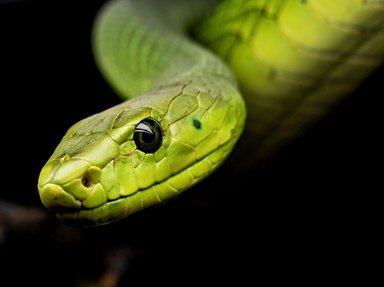Quiz Answer Key and Fun Facts
1. Which snake family DOES NOT occur in Europe?
2. Which of these snakes is NOT venomous?
3. Which of these snakes lives the furthest north?
4. This rather small snake lives in central and southern Europe. It became very rare and was mentioned in the Habitats Directive of the EU. It is venomous, but its venom is not strong enough to do much harm to humans. This is ...
5. What fact is true about the western whip snake - Coluber (Hierophis) viridiflavus?
6. What fact is NOT TRUE about the nose-horned viper (Vipera ammodytes)?
7. Which fact is true about the smooth snake (Coronella austriaca)?
8. Which of these facts is true about the European grass snake (ringed snake) - Natrix natrix?
9. Which of these species does NOT occur in Europe?
10. Which coloration CANNOT occur in the common adder (Vipera berus)?
Source: Author
Jasra
This quiz was reviewed by FunTrivia editor
crisw before going online.
Any errors found in FunTrivia content are routinely corrected through our feedback system.


